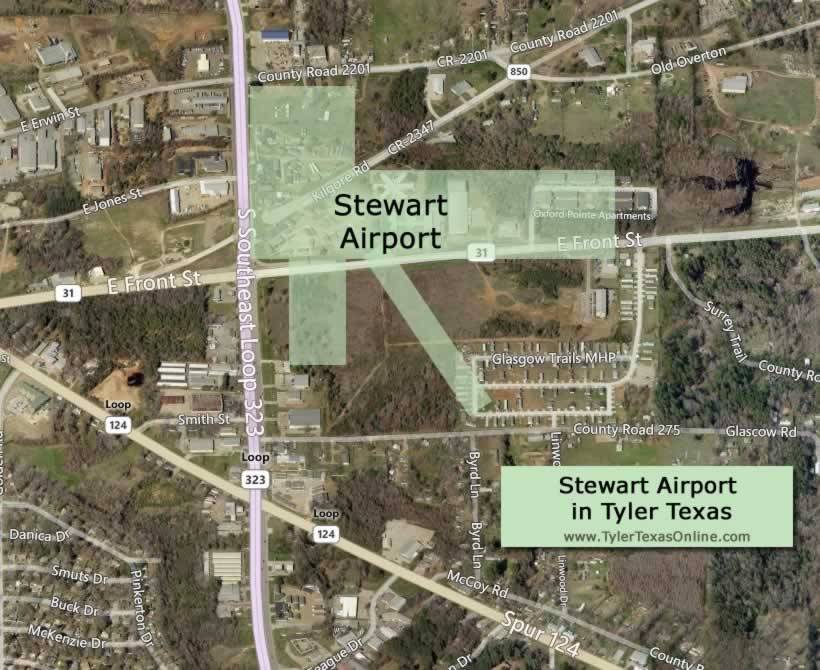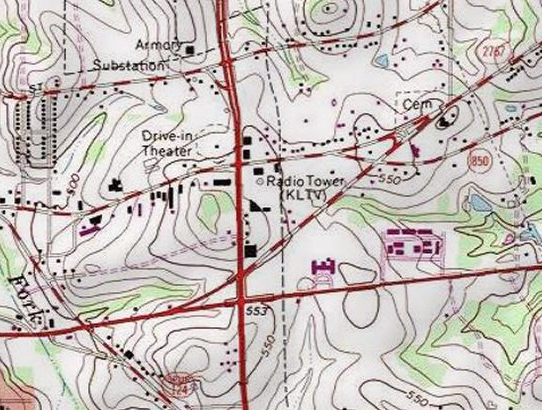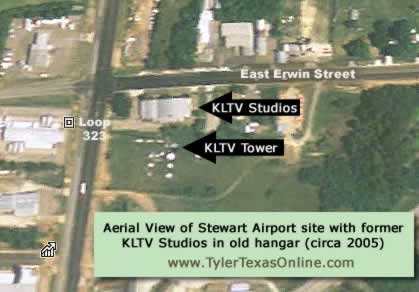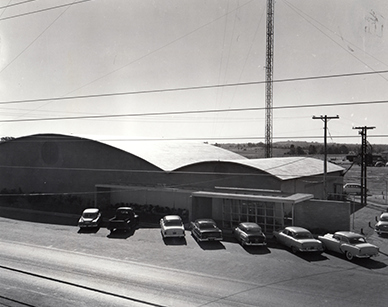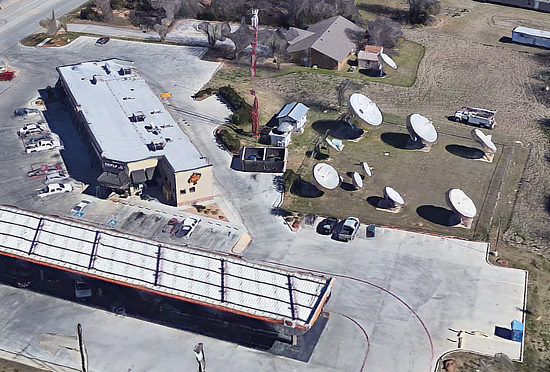 |
Stewart Airport in Tyler, Texas
Walter E. Stewart
Walter Edgar Stewart was born in 1878 and became a well known banker, financier, aviator, benefactor, and oilman in Tyler, and in Texas. Honored with Plaque #26 on Tyler's "Half Mile of History, " he died in March of 1956.
He founded Weslaco, Texas, between between Harlingen and McAllen. The city's name is taken from the initials of the W. E. Stewart Land Co., which held title to the site from 1917 to 1919.
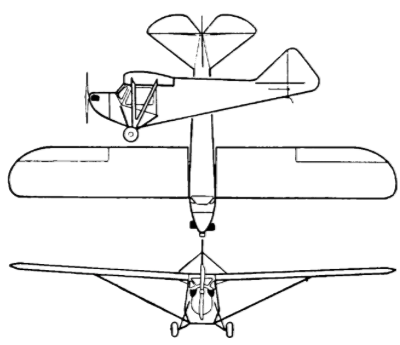 Drawing of a typical Orin Welch monoplane |
Stewart also helped make Tyler a medical hub of East Texas. He was instrumental in forming the W.E. and Lela I. Stewart Blood Bank at 817 Clinic Drive. Opened on June 21, 1951, Stewart provided money for construction of the building and medical equipment.
The following are highlights of his aviation career, including the building and operation of Stewart Airport in Tyler.
Orin Welch Monoplanes: A Connection with Stewart Airport
Orin Welch was a self taught airplane designer and manufacturer. Born in 1906, Welch was a pioneer aviator in the state of Indiana. He founded the Orin Welch Aircraft Company, Welch Aircraft Industries, and the Orin Welch School of Aviation in Anderson, Indiana.
In the 1920s Welch worked with older planes and modified them for performance improvements. By the 1930s he was building his own plane designs. His monoplanes were inexpensive, had low maintenance, outstanding performance, and had side-by-side seating. The fuselage was constructed with fabric covered welded steel tubing with a triangular cross section.
The controls were mounted overhead with an adjustable control wheel that could be positioned for either pilot. The company built 38 of the OW-5M monoplanes.
Welch died while piloting a C-47 transport plane over "The Hump" between China and India in March of 1943.
The connection between Orin Welch and Walter Stewart in Tyler is unclear.
Walter E. Stewart Plans to Build the Texas Bluebird in Tyler
Walter E. Stewart planned to build the Texas Bluebird airplane in a plant on a site at his airport in East Tyler beginning in 1946.
The aircraft would have a wingspan of 34'5" and a length of 20'6". It was to have a range of 250 miles. The Bluebird would be a rebuild of the Welch OW-6M with changes in dihedral, control cables, and powerplant.
The OW-6M Type Certificate was held by Stewart Aircraft Industries, Inc. and sometimes the plane was identified as the Stewart OW-6M.
The Texas Bluebird was to sell for about $2,000. Planned production never occurred.
The Texas Aircraft Manufacturing Company
Even though the Texas Bluebird production ceased, other aviation-related industries continued on the site.
In March 1949 the Aircraft Manufacturing Company was formed with oilman S.J. Taylor and W. E. Stewart as the primary stockholders. The IRS seized the assets of Johnson Aircraft Corporation, and Aircraft Manufacturing Co. purchased them at auction in February of 1950.
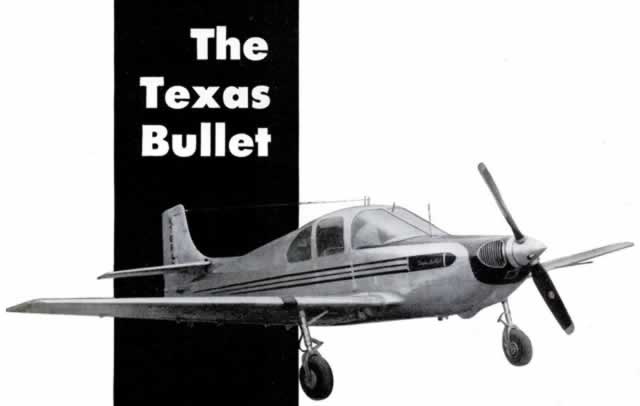 |
Now, another aircraft, "The Texas Bullet", would play a role in the history of Stewart Airport. The Texas Bullet, with its jet assist, was widely publicized when it was flown in its experimental stages by "Pop" Johnson of the Johnson Aircraft Co.
Johnson had earlier built "The Texas Rocket 185". After losing control of the Rocket program, Johnson began work on a new, all-metal, two seat design called the Bullet 125. The design concept changed to a four-place plane powered by a Continental E-185 engine and was eventually certificated in 1950 as the Texas Bullet 205 by the Aircraft Manufacturing Company based in Tyler.
In December 1947 Johnson Aircraft Corporation of Grand Prairie, Texas, began work on the Johnson Bullet. In September of 1948 it was announced that Johnson Aircraft would move to Stewart Airport in Tyler.
After the Johnson company dissolved, S. J. Taylor and W.E. Stewart, both oilmen from East Texas, formed the Aircraft Manufacturing Company in March of 1949 and took over the design plans to continue production of the Texas Bullet.
Taylor and Stewart rebuilt the plane, removing the jet assist. After months of work and testing, they received the Type Certificate in December of 1950.
The Texas Bullet Model 205 specifications:
- 205 hp Continental E-185-1 engine
- Wingspan: 28'
- Length: 23'
- Height: 6'6"
- Gross Weight: 2,300 lbs
- Top speed: 192 mph
- Range: 750 miles
- Service Ceiling: 17,800'
The prototype was never brought to the approved type design configuration. Five aircraft were built and registered with Standard Airworthiness Certificates, the last in November of 1951.
Stewart Airport Location and Configuration
Stewart's airport began about 1942 and featured a 2,500' north-south runway, and a 1,900' runway with east-west alignment. Both were grass and sand. Stewart Airport is shown below in a 1948 USGS Topo map. At that time the airport was reported to have three unpaved runways, with a long building running north-south along the road on the west side of the airport.
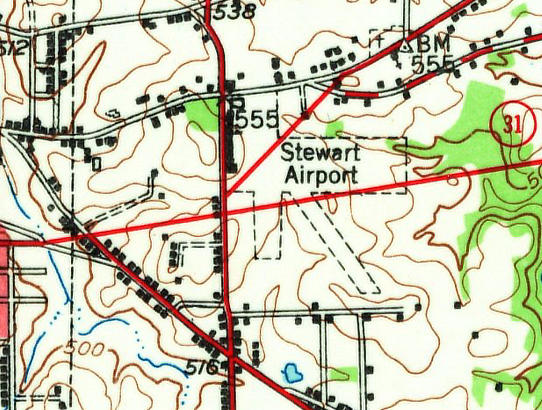 |
The map below shows the approximate location of Stewart Airport in relation to the current Tyler street grid. East Erwin (CR 2201) ran across the top of the airport, and East Front Street was near the bottom. The airport was closed sometime before 1960.
|
KLTV Begins Operations in a Remodeled Hangar at Stewart Airport Site
Television station KLTV began broadcasting on October 14, 1954, and originally had its studios located on East Erwin Street at Loop 323 in a former hangar of Stewart Airport. The tower (FCC #1052727) was completed on June 1, 1954.
The location of the studios in relation to the Stewart Airport site is shown in the map and aerial photo below.
Vintage map showing the location of the KLTV radio tower on the old site of Stewart Airport at the southeast corner of East Erwin and present-day Loop 323. The Starlite Drive-in Theater was located on the northwest corner of the intersection, across from the airport, as shown on the map. It opened in the late 1940s. |
|
KLTV Studios initially operated from this remodeled hangar at Stewart Airport. The building was demolished in November of 2007. The KLTV tower is seen in the background.
|
In 1996, KLTV relocated its operations from its longtime studios on East Erwin to a new facility downtown at 105 West Ferguson.
Read more about the history of KLTV on the station's website
The Stewart Airport Site TodayIn recent times, an array of satellite dishes remained on the site, as did a 498' tower originally used by KLTV (see photo to the right). A Shell service station and fast-food outlets now occupy the corner. |
|
More Landing Strips and Airports in Tyler, Texas
Several more landing strips were in the Tyler area, besides Tyler Pounds and Stewart Airport.
Read more about Tyler Texas Area Airports, including these:
- Paluxy Drive Airport
- The Airport at Cumberland Park
- Pineridge Airport on US 69 South of Toll 49
- Emerald Bay Airport
- Aero Estates Airpark
- Airport near Lake Tyler East on Highway 64
- Tarrant Field in Mount Selman
For more information and history about Stewart Airport, we recommend a visit to the Abandoned and Little Known Airports website.
Tyler Aviation Resources on this Website |
| Pounds Airport (TYR) Overview Pounds Airport History Stewart Airport History Tyler Area Airport & Landing Strips History HAMM Museum Trans Texas Airways |
 |
||
 |
 |
 |
